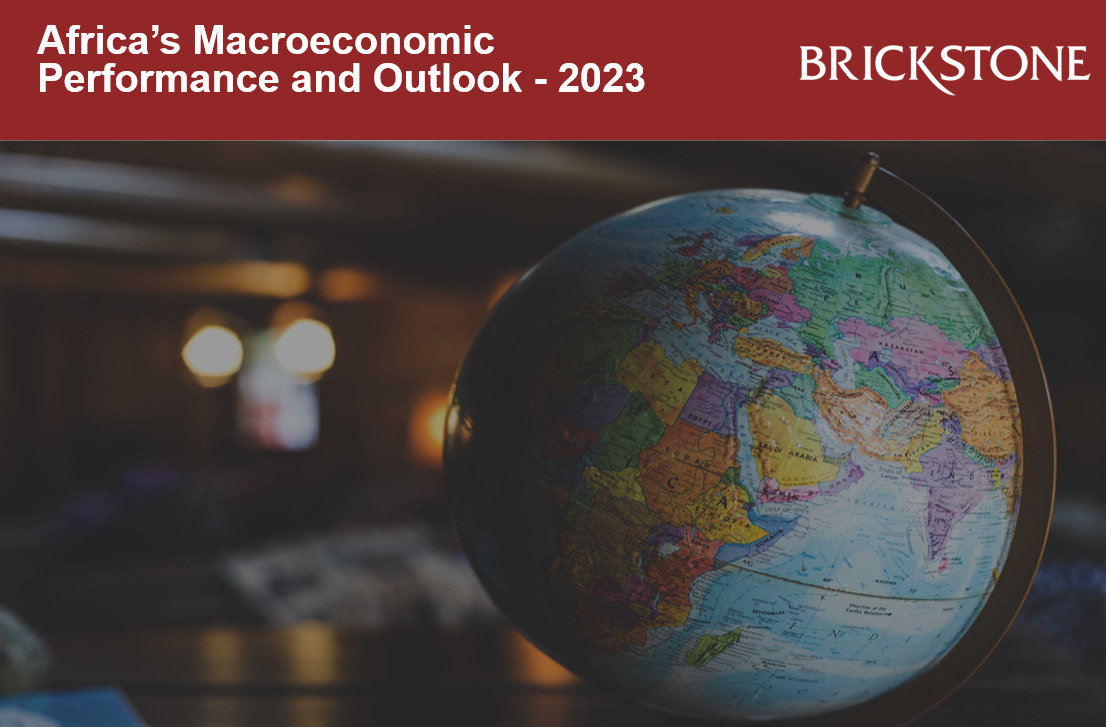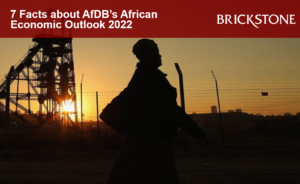Africa’s Macroeconomic Performance and Outlook – January 2023
The African Development Bank, on the 19th of January, 2023, launched the 2023 Africa’s Macroeconomic Performance and Outlook.
The publication offers policymakers, global investors, researchers, and other development partners an up-to-date evidence-based assessment of the continent’s recent macroeconomic performance and short-to-medium-term outlook amid dynamic global economic developments. It also features forecasts and analysis from the surveillance of regional and global macroeconomic developments.
The report advocates for bold policy actions at the national, regional, and global levels to help African economies mitigate the compounding risks.
This article by Brickstone, reviews the African Development Bank Group’s publication on Africa’s Macroeconomic Performance and Outlook, highlighting key insights and takeaways.
Africa’s Macroeconomic Performance and Outlook
According to the AfDB, Africa is set to outperform the rest of the world in economic growth over the next two years, with real gross domestic product (GDP) averaging around 4% in 2023 and 2024. This is higher than projected global averages of 2.7% and 3.2%.
With a comprehensive regional growth analysis, the report shows that all the continent’s five regions remain resilient with a steady outlook for the medium-term, despite facing significant headwinds due to global socio-economic shocks.
Despite the confluence of multiple shocks, growth across all five African regions was positive in 2022—and the outlook for 2023–24 is projected to be stable.
It also identified potential risks and called for robust monetary and fiscal measures, backed by structural policies, to address them.
The following are key facts from the Africa’s Macroeconomic Performance and Outlook:
Following the impressive recovery in 2021 after the shock of the COVID-19 pandemic, African economies slowed amid significant headwinds in 2022, but they remain resilient with a stable outlook. The slowdown in economic growth has been due to a confluence of factors, including the growing impacts of climate change, persistent COVID-19 risks in Africa and globally, and the spill-over effects of rising geopolitical tensions such as evolving flashpoints of conflict and insecurity on the continent and Russia’s invasion of Ukraine.
As in many emerging market economies, tightening financial conditions and the appreciating US dollar have had dire consequences for most African economies. They have increased the cost of servicing existing debt and heightened the risk of debt distress. They have also restricted access to international capital markets for new financing to meet fiscal needs. And they have greatly amplified instability in foreign exchange markets and pushed price stability beyond the grasp of most central banks.
The estimated average growth of real gross domestic product (GDP) slowed to 3.8 per-cent in 2022 from 4.8 percent in 2021— and is projected to stabilize at 4 percent over 2023–24. Theslowdown reflects the confluence of the domestic and external shocks just high-lighted. In addition, the downward revision of Libya’s real GDP growth for 2021 from 177.3 per-cent to 28.3 percent due to updated oil produc-tion data dwarfed the marginal declines in other economies.
Despite the confluence of multiple shocks, growth across all five African regions was positive in 2022— and the outlook for 2023–24 is projected to be stable. For example in Central Africa, bolstered by favorable commodity prices, growth is estimated to have been the continent’s fastest, at 4.7 percent, up from 3.6 percent in 2021. In East Africa, growth is estimated to have moder-ated to 4.2 percent in 2022 from 5.1 percent in 2021 but is projected to recover to the prepan-demic average above 5.0 percent in 2023 and 2024.
Slowing global demand, tighter financial con-ditions, and disrupted supply chains had differentiated impacts on African economies. The impacts of shocks on resource-intensive economies and major commodity exporters varied in 2022 depending on the type of exported commodities. Overall, the outlook is positive, with prices for key exports remaining high and competition for Africa’s natural resources expected to grow as advanced economies look for alternative food and energy markets and for mineral resources to support their green transitions.
Tighter global financial conditions put pres-sure on African domestic currencies, raising the risk from already high inflation, but infla-tion is projected to ease in 2023 as countries sustain restrictive monetary and structural policies. The tighter global financial conditions destabilized the foreign exchange markets of most African countries, but the dynamics were mixed. Most African currencies, especially in commod-ity-exporting countries, lost substantial value against the US dollar in 2022 due to monetary policy tightening in the United States.
Average consumer price inflation is estimated to have increased by 0.9 percentage point, to 13.8 percent in 2022 from 12.9 percent in 2021, the highest in more than a decade. It reached double digits in 19 African countries, with the high-est rates in east Africa (25.3 percent), west Africa (16.8 percent), and Southern Africa (13.2 percent).
Africa’s current account deficit narrowed slightly, to 1.5 percent of GDP in 2022 from 1.7 percent in 2021, due to improved trade bal-ances buoyed by higher commodity exports. The deficit is projected to stabilize at 1.6 percent of GDP in 2023–24, supported by the knock-on effects of commodity prices on net commod-ity importers and exporters. Similarly, the aver-age fiscal deficit is estimated to have narrowed to 4.4 percent of GDP in 2022 from 5.2 percent in 2021, thanks to fiscal consolidation measures by several countries.
The welcome recovery and the economic resilience of African countries in the short to medium term come with cautious optimism given the considerable global uncertainty. The risks of debt default could increase in some Afri-can countries— given the already high accumula-tion and changed structure of public debt in the past decade, the additional financial pressures created by the appreciating US dollar, and the tightening monetary conditions globally.
The main downside risks to the outlook are: high interest rates, which could exacerbate the cost of debt service and slip some countries into a high risk of debt distress; losses and damages due to extreme weather events; dependence on commodity exports with lim-ited value addition; regional conflicts in key hotspots such as Burkina Faso, Democratic republic of Congo, ethiopia, Mali, and Mozambique; political risks due to upcoming national elec-tions in some countries. Also, an estimated 15 million additional people were driven into extreme poverty in Africa due to higher global energy and food prices in 2022, exacerbating the increase in extreme poverty induced by the COVID-19 pandemic.
Download the full publication here.






